Japan doesn’t have a single official animal, but it does have several national animal symbols that are representative of Japanese culture and its traditions.
We’re going to take a look at two of the national symbols – the Japanese green pheasant and the koi carp – as well as two culturally important animals, the Japanese macaque and the sika deer, while focusing on each animal’s individual importance and where best to see them.
As you explore these cultural icons, having an iRoamly Japan travel eSIM ensures you stay connected! Now, let’s begin our exploration!
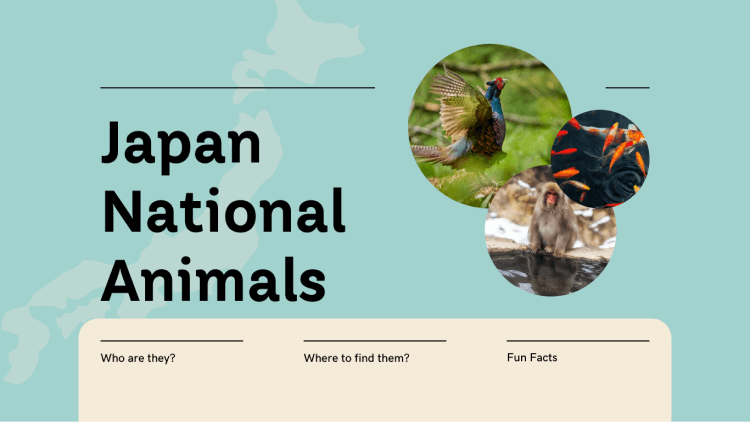
Japanese Green Pheasant (Phasianus versicolor)
The green pheasant, or Phasianus versicolor, has been found on the Japanese archipelago for millions of years and has been the national bird of Japan since 1947. It’s an endemic species, found nowhere else on Earth. Throughout Japanese history, the green pheasant has appeared in everything from folklore to art, often symbolizing the changing of the seasons.
Fun Facts
Role in Culture: The calls of the green pheasant are considered an auspicious sign, particularly around the New Year.
Diet and Behavior: The green pheasant is an omnivore, consuming seeds, insects, and even small animals. It also earns its reputation for skittishness, rarely being seen directly but heard through its call or by the rustling of foliage in which it hides.
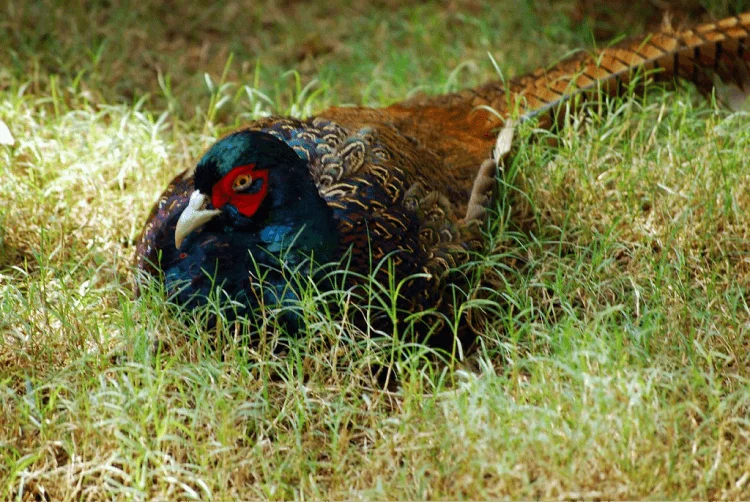
Where to See
Green pheasants can be found on all main Japanese islands – Honshu, Shikoku, and Kyushu – and in a variety of environments, from flat agricultural land to mountainous regions.
They are most reliably spotted in rural locations, further away from built-up areas, and during the times of day they are most active – the early morning or late evening. Bird enthusiasts often have luck seeing them walking the edges of fields and close to forests, which are foraging or roosting locations for the pheasants.
Koi Carp (Cyprinus rubrofuscus)
Koi, Cyprinus rubrofuscus in scientific language, were first bred for their looks in Japan as colorful mutants of common carp over a millennium ago.
Because their moving patterns and colors are truly magnificent, people have bred them for generations to preserve and enhance these traits. Koi, however, are more than fancy carp – they are also associated with bravery and perseverance in Japanese culture.
In part, this reputation is based on an observation that koi can swim against the current. Even more impressively, koi can live for a very long time.
Fun Facts
Role in Culture: Celebrated on one of Japan's national holidays, Children's Day (Kodomo no Hi), koi carp are represented by koinobori, carp streamers that adorn homes to wish children happiness and strength.
Lifespans: Koi carp can live for over 50 years, and exhibit impressive growth - one koi, named Hanako, reportedly lived to 226 years old.
Social Behavior: Koi are generally sociable creatures, frequently rising to meet visitors and even eating from their hands in a pond accustomed to human presence.
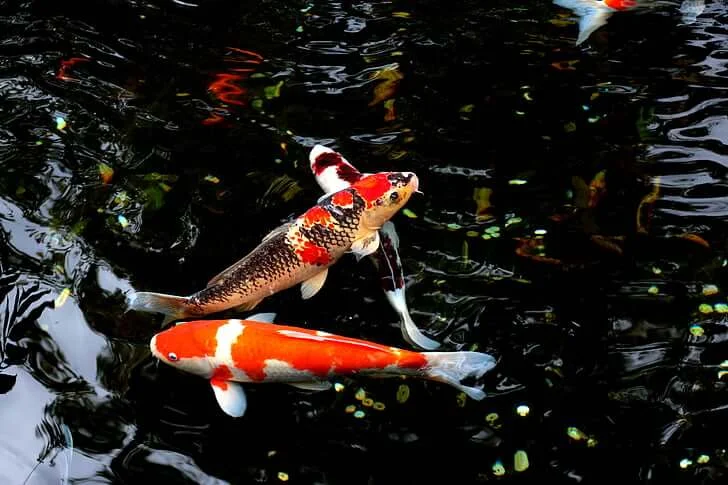
Where to See
Koi carp can be found in many traditional Japanese gardens, public parks, and special Koi ponds throughout Japan.
The most famous include the ponds of the Imperial Palace in Tokyo and the charming gardens of Kyoto, where they are kept in ponds perfectly integrated into the overall design of a traditional Japanese garden. Watching these fish in such surroundings is both tranquil and full of aesthetic charm.
Japanese Macaque (Macaca fuscata)
The Japanese Macaque, also known as the snow monkey, is the world’s northernmost living non-human primate. These macaques possess adaptations to life in cold climates, but are most famous for their winter habit of soaking in natural hot springs. Their complex sociality and behavior have made them a major focus of scientific research and they provide valuable insights into the biology and evolution of primates, including humans.
Fun Facts
Role in Culture: Snow monkeys have captivated audiences in countless wildlife documentaries around the world, and have become an icon of Japanese culture, often for their resilience and adaptability.
Thermal Regulation: When snow monkeys are observed in hot springs, they are not just relaxing -- they are regulating their body temperature during cold winter months.
Diet Adaptations: Their winter diet includes bark, leaves, and small invertebrates, but they are opportunistic scavengers and will eat almost anything that is edible.
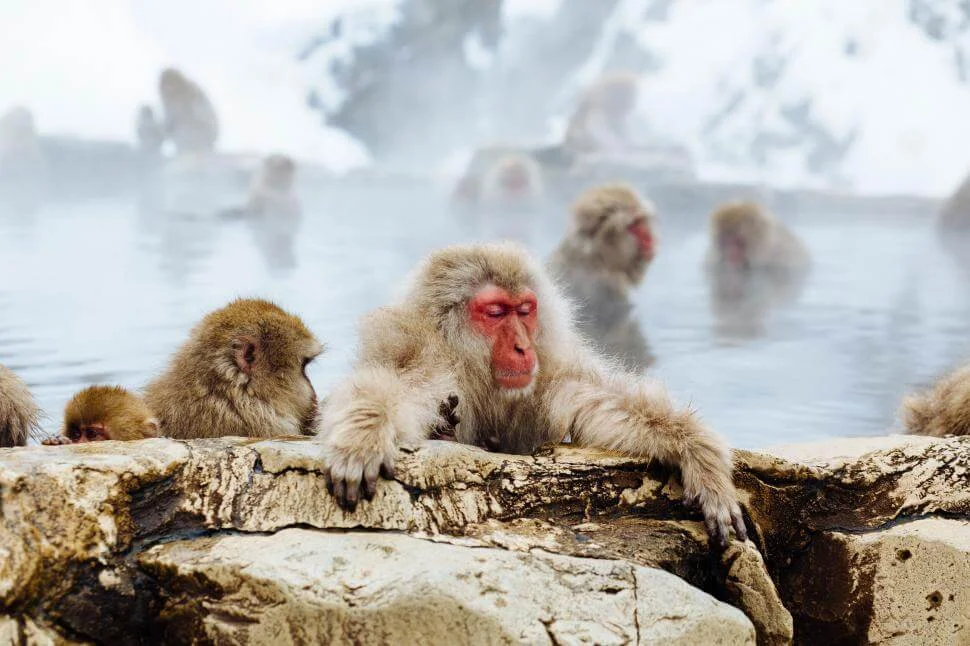
Where to See
The best place to observe Japanese Macaques in their natural setting is at Jigokudani Monkey Park in Nagano Prefecture. It’s the only place in the world where you can see them naturally bathing in hot springs, most famously during winter.
Nestled beautifully in nature, the park offers an exclusive opportunity to observe these incredible creatures up close.
The Arashiyama Monkey Park Iwatayama in Kyoto is another great spot for coming close to the macaques, as the animals live freely in a mountainous environment and are fed under supervision.
Sika Deer (Cervus nippon)
While Sika Deer is native to East Asia, in Nara, Japan, it is almost synonymous with the city, and has been held as sacred here for over a millennium.
Legend describes Sika Deer as divine emissaries in the Shinto religion, which is the primary belief system in Japan, leading to the deer being protected in both Nara and Miyajima. Their inquisitive, gentle behavior, combined with their importance to the area, makes Sika Deer a highlight of any visit to these cities.
Fun Facts
Protected Status: Sika Deer in Nara are protected by law and cannot be harmed or harassed. The penalty for harming a Nara deer is severe, which helps to explain the remarkable population density of Sika Deer in the area.
Behavioral Traits: Sika Deer are notably tame around people, and many bow when visitors offer them food. The behavior is likely learned and reinforced by positive outcomes, such as access to food.
Diet and Adaptation: Sika Deer are able to eat a variety of food, including grass, leaves, and even fruit that has fallen off trees. Their diet and habitat requirements change with the seasons.
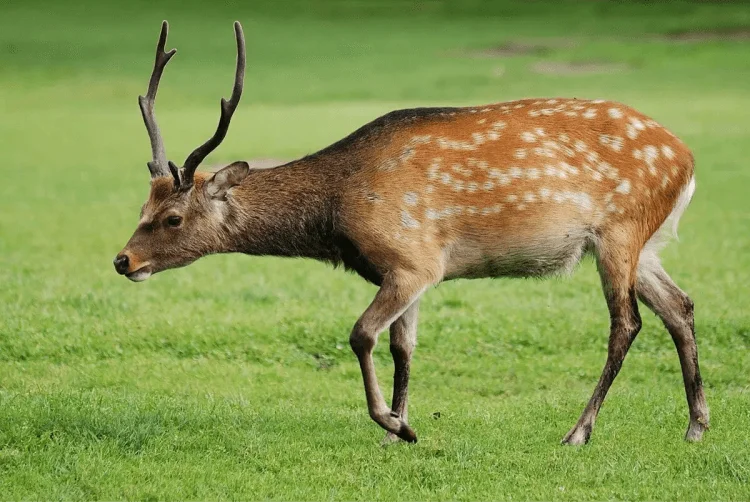
Where to See
The most famous place to see Sika Deer is Nara Park, where the animals freely roam the gardens of temples, freely roaming in the crowds of tourists. The deer are known to eat special crackers sold by local vendors, bowing in appreciation. Visitors can watch the charming spectacle while learning about the city’s astonishing cultural heritage at the nearby Todai-ji Temple and other ancient structures.
Miyajima Island near Hiroshima is another important spot for the deer, which roam freely in the woods. The deer are as much part of the island as the torii gate that partially submerges at high tide.
The Bottom Line
Travel to Japan with an eye toward its unique wildlife.
If you’re curious about interesting animals in Japan, imagine feeding colorful koi in classical gardens, watching snow monkeys laze in steaming baths in the autumn snow, or greeting sacred deer in the precincts of an ancient temple. Each species of Japan’s unique wildlife presents a stroke of natural beauty.
Set off on a journey to experience an alien landscape and culture, all the while savoring a sense of adventure. Happy travel!
